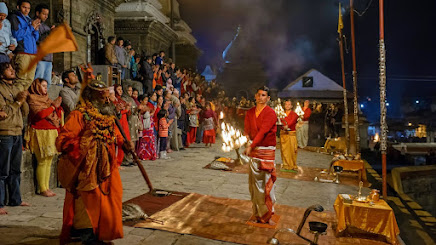Nepal is a small landlocked country , bordered by India and China and known for its natural beauty and cultural heritage, Himalayan mountain , including Mount Everest, 8 out of 14 highest peak in the world present in Nepal. The country is home of ethnic groups and languages, with Nepali being the official language.
Nepal is a historical country, with the main valley Kathmandu being the center of the Nepalese civilization for centuries. In the
Kathmandu many important religious and cultural sites,
including the Pashupatinath Temple, the Swayambhunath Stupa, and the Boudhanath
Stupa are present. These sites are also a UNESCO World Heritage Site.
The Nepalese economy is heavily dependent on
agriculture, with a large percentage of the population engaged in farming and
livestock activities. However, tourism is an important sector as well, with
many visitors coming to Nepal to trek in the Himalayas, go on safari, or take
part in other adventure activities.
Despite its natural beauty and cultural
heritage, Nepal has faced many challenges in recent years, including political
instability, poverty, and a lack of infrastructure. However, the country has
made some progress in recent years, with economic growth and a reduction in
poverty.
In addition, Nepal is a beautiful country
known for its natural beauty and cultural heritage, has a rich history and many
important religious and cultural sites. The Nepalese economy is heavily
dependent on agriculture, but tourism is also an important sector. Despite
facing challenges such as political instability, poverty, and a lack of
infrastructure, Nepal is working to improve its economic growth and reduce
poverty.
Nepal has a rich and
diverse culture, influenced by both Hindu and Buddhist traditions. The main
religion in Nepal is Hinduism, but Buddhism also plays an important role in the
country's culture.
One of the most important aspects of Nepali
culture is the celebration of festivals. The Nepali calendar is filled with
festivals throughout the year, many of which are religious in nature. The most
important festival is Dashain, a Hindu festival that celebrates the victory of
good over evil. Tihar, another Hindu festival, is also celebrated with great
fanfare and is known as the festival of lights.
Nepali cuisine is also an important part of
the culture. It is heavily influenced by Indian and Tibetan cuisine and
features a variety of dishes made with rice, lentils, and spices. Momos, a type
of steamed dumpling, is a popular street food in Nepal.
Nepali dress is also an important aspect of
the culture. Men typically wear daura suruwal, a traditional Nepali dress,
while women wear sari or cholo, a knee-length blouse and a long scarf.
Music and dance are also an important part of
Nepali culture. The traditional music of Nepal is known for its use of
instruments such as the sarangi and the madal, and for its unique singing
style. Nepali folk dances, such as the Dohori, are also popular and often
performed at festivals and celebrations.





Comments
Post a Comment